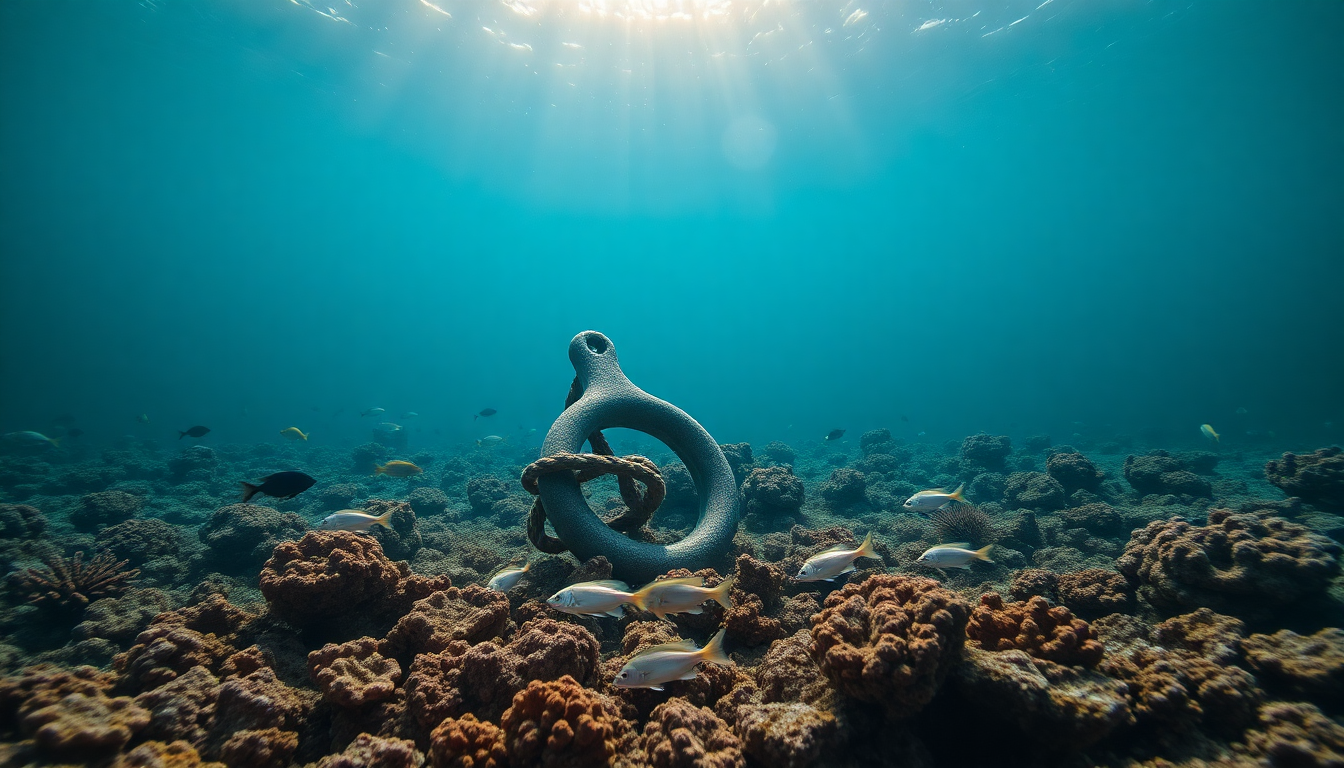Table of Contents
Have you ever stopped to think about how our actions at sea can ripple out to affect entire ecosystems? It’s a sobering thought, especially considering a recent incident near Thitu Island in the South China Sea that highlights this very issue. A single vessel’s impact on coral reefs and marine life reminds us of the delicate balance we must maintain in our oceans. Let’s dive into the findings from investigators who examined the damage caused by a vessel’s parachute anchor, and what it means for marine conservation efforts.
Incident Overview and Findings
On June 7, a vessel identified by its hull number 16838 found itself stranded near Thitu Island, a location of strategic importance in the disputed waters known as Pag-asa Island. What investigators uncovered was shocking: the vessel dragged a massive parachute anchor across a fragile marine ecosystem, damaging at least 464 square meters (around 4,994 square feet) of coral reef. This area is less than three kilometers from one of the Philippines’ main outposts in the region, raising serious concerns about environmental degradation in these high-stakes waters.
The National Task Force for the West Philippine Sea, along with the Palawan Council for Sustainable Development and the Philippine Coast Guard, took action by diving into the affected area. Their assessments revealed that the parachute anchor had drifted across nearly 30 percent of the impacted reef, ultimately resting on 307 square meters of coral. This blockage not only prevented sunlight from reaching the corals but also posed a severe threat to the marine life that relies on these ecosystems for survival. Isn’t it alarming how one vessel can cause such widespread harm?
The Broader Impact on Marine Ecosystems
The consequences of such incidents stretch far beyond just the physical damage to coral reefs. Coral ecosystems are vital for biodiversity, serving as habitats for countless marine species and providing essential services like coastal protection and carbon sequestration. When maritime activities scar these delicate environments, it can lead to long-term ecological issues.
As highlighted in the report, the impact of the vessel’s activities is particularly concerning due to the ecological significance of the area. Repeated maritime operations can lead to irreversible damage, jeopardizing not only the coral reefs but also the livelihoods of local communities that depend on fishing and tourism connected to healthy marine ecosystems. What might happen to these communities if we continue down this path?
Moving Forward: Conservation and Mitigation Strategies
In light of these findings, it’s crucial for all stakeholders—including governments, maritime operators, and environmental organizations—to join forces on effective conservation and mitigation strategies. Stricter regulations and enhanced monitoring practices can help prevent future incidents that threaten marine ecosystems. Moreover, public awareness campaigns that educate maritime operators about the ecological importance of these environments can help cultivate a sense of responsibility and stewardship.
Conservation efforts should also prioritize restoring damaged areas and rehabilitating affected marine life. This could mean establishing marine protected areas and promoting sustainable fishing practices. By taking proactive steps now, we can work toward preserving these invaluable ecosystems for generations to come, ensuring they continue to thrive despite the pressures from human activity. Isn’t it time we started treating our oceans with the care they deserve?


